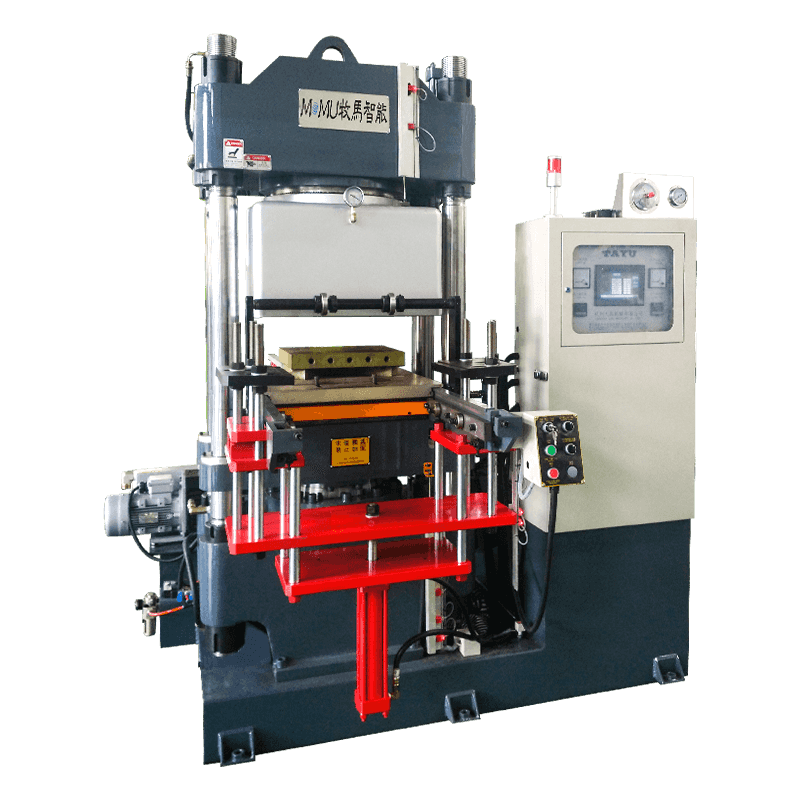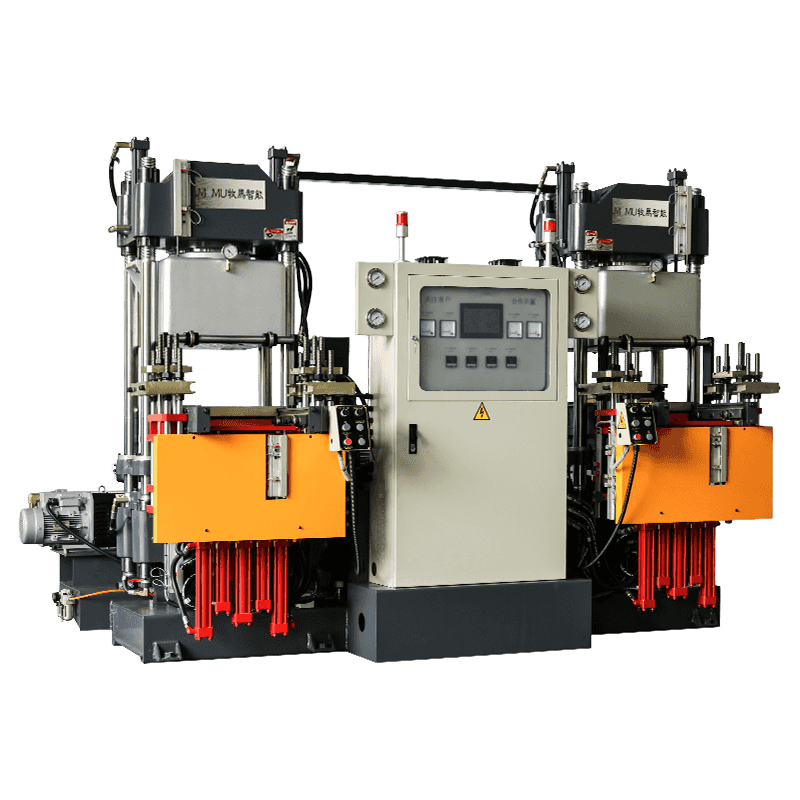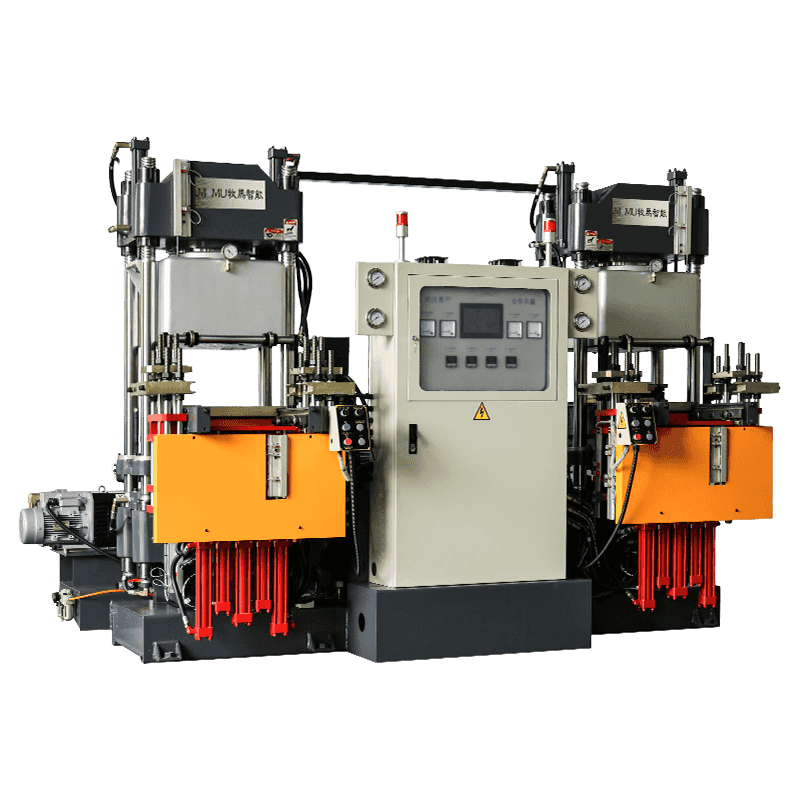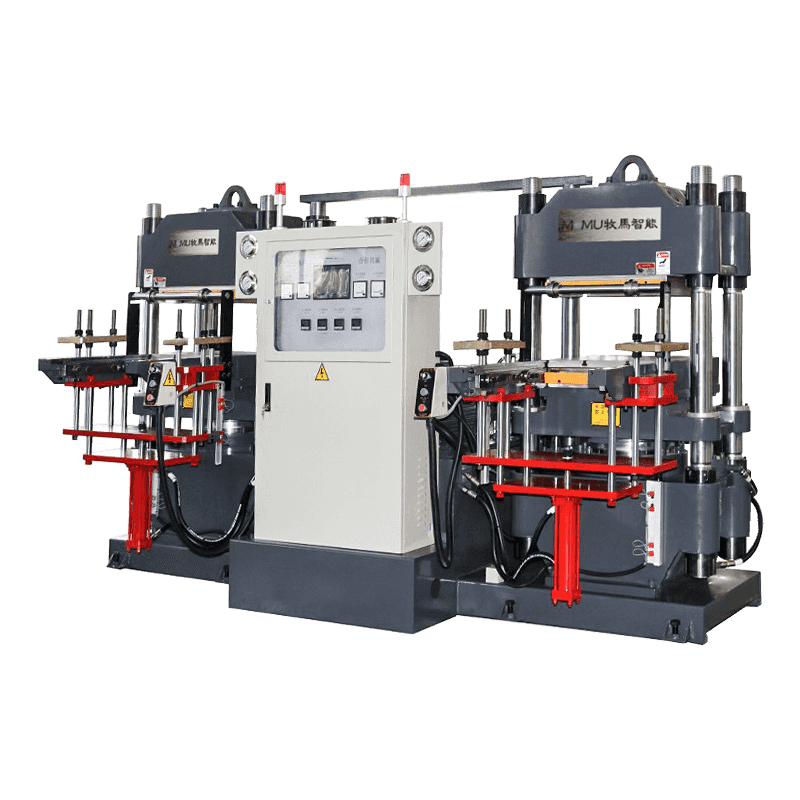In the rubber product processing industry, compression molding is a classic and widely used production process. The core equipment, Single Machine Rubber Compression Molding Machine, has become the first choice for small and medium-sized rubber product manufacturers and laboratories due to its compact structure, convenient operation and high molding efficiency.
What is Single Machine Rubber Compression Molding Machine?
This is a single compression molding equipment designed specifically for rubber product manufacturing. Its main principle is to place the pre-weighed rubber raw materials in the mold, and through mechanical pressurization and high-temperature heating, the rubber flows to fill the mold cavity and finally solidifies into the target product.
What are its core structures and technical features?
Hydraulic system: Provides strong and stable pressing force to ensure that the mold is tightly closed and the molding is uniform.
Temperature control system: Electric heating or steam heating system, high temperature control accuracy, up to ±1℃, to ensure sufficient vulcanization reaction.
Operation interface: Equipped with a touch screen or button control panel, supporting parameter presets, automatic timing, automatic mold opening and other functions.
Compact structure: suitable for production workshops or laboratory scenarios with limited space.
Customizable mold platform: meet the needs of different product specifications.
Why choose a single rubber compression molding machine?
1. Suitable for small batch production of multiple varieties
Suitable for scenarios with frequent mold changes and changing product types, flexible equipment switching, saving adjustment time.
2. Easy operation and low personnel training cost
Moderate degree of automation, even novices can quickly get started, reducing labor costs and error risks.
3. Controllable equipment cost and simple maintenance
Compared with multi-line machines and injection molding machines, its initial investment is lower and later maintenance is easier.
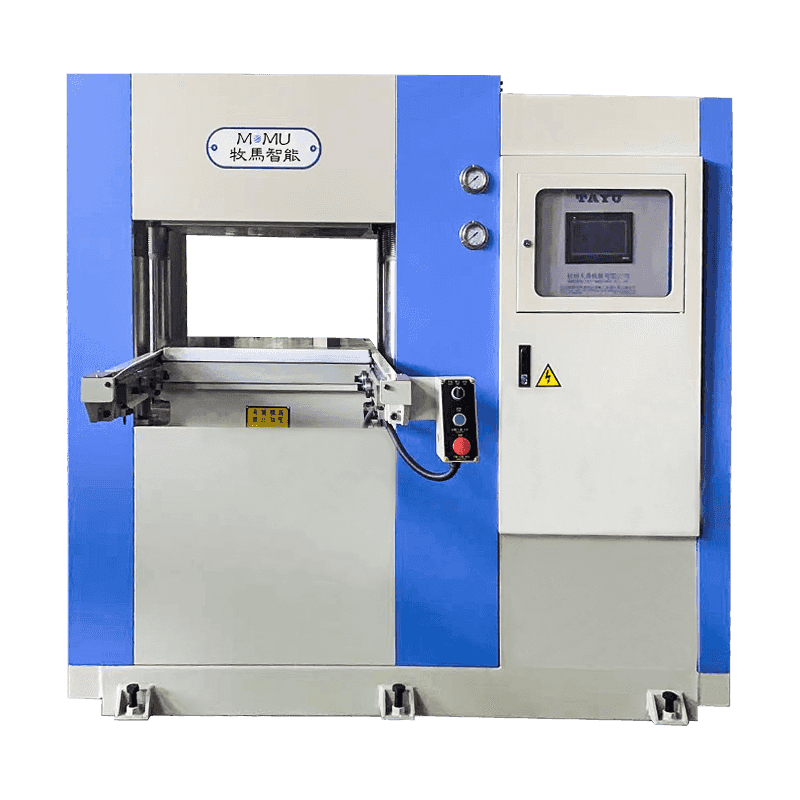
4. Wide compatibility
Suitable for the processing of various rubber materials such as NR, SBR, NBR, EPDM, silicone, fluororubber, etc.
Wide range of applications, covering almost all rubber products
Industry
Application product examples
Automotive industry
Rubber seals, shock absorbers, fenders
Medical industry
Medical gaskets, tourniquets, silicone covers
Home appliances
Silicone gaskets, non-slip foot pads, electrical sealing components
Industrial seals
Gaskets, O-rings, flange seals
Daily consumer goods
Kitchen utensils, sports equipment accessories, toy parts
Hot questions and answers: You may ask about this equipment...
Q1: What is the difference between rubber compression molding and injection molding?
Compression molding: suitable for large-sized, simple-structured rubber parts, low mold cost.
Injection molding: suitable for small precision products, high efficiency, but high mold and equipment costs.
Q2: Is a single press suitable for mass production?
It is relatively unsuitable for long-term continuous production of large quantities of products, but the overall production capacity can be improved by operating multiple single machines in parallel.
Q3: How to replace and maintain the mold?
Most single machines support fast clamping mold system, which is convenient for replacement; molds need to be cleaned and waxed regularly to prevent rust.
Q4: Will there be odor or pollution during operation?
If environmentally friendly formula rubber is used and a good ventilation system is configured, odor and pollution can be controlled at a low level.
Q5: Can automatic demoulding be achieved?
Some high-end models support automatic demoulding function, and can also be equipped with a robotic arm to improve efficiency.
Technology trends and industry development direction
Develop towards higher automation: such as integrated manipulators, automatic loading and unloading, closed-loop control systems, etc.
Environmentally friendly material matching: more green rubber materials without vulcanizers will be adapted in the future.
Intelligent monitoring system: real-time recording of temperature and pressure curves for quality traceability and data analysis.
Modular design: convenient for equipment maintenance, parts replacement and upgrading.
How to choose a suitable Single Machine Rubber Compression Molding Machine?
Determine the size and complexity of the product: determine the tonnage and platform specifications of the equipment.
Confirm the rubber type and vulcanization temperature: ensure that the temperature control system matches.
Choose reliable brands and after-sales support: Especially in mold debugging and parameter setting, manufacturers need support.
Evaluate scalability needs: such as whether to upgrade automation or connect to the MES system in the future.
Conclusion: Single rubber compression molding machine helps flexible manufacturing and cost control
For small and medium-sized enterprises that focus on equipment flexibility, cost-effectiveness and diversified production, Single Machine Rubber Compression Molding Machine provides an ideal solution. It is not only a mature rubber molding equipment, but also a smart choice to help enterprises respond to the market quickly and control investment costs.
